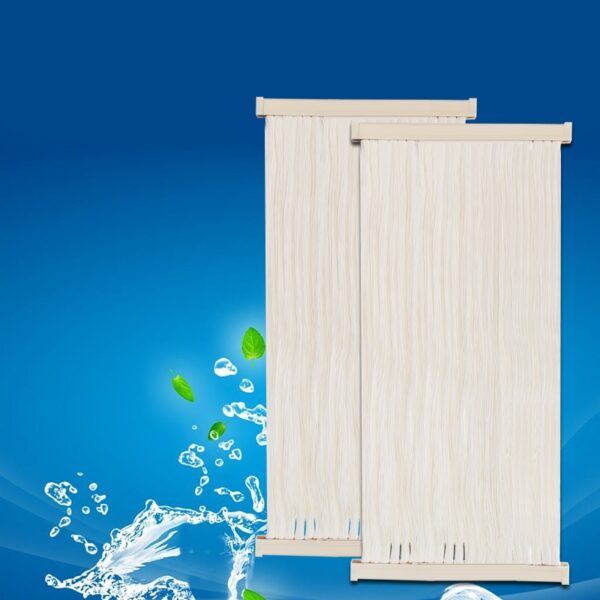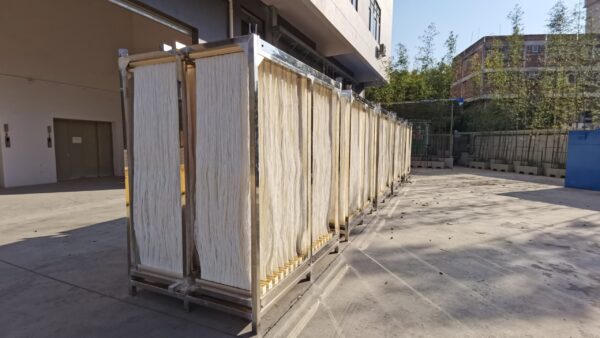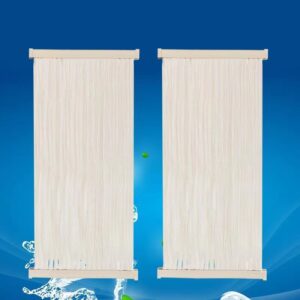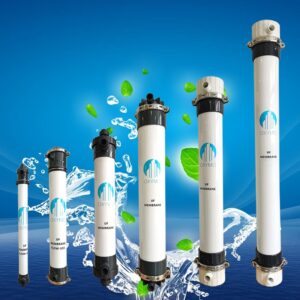Description
The membrane module is placed in the reactor, and the filtering liquid is obtained by vacuum pumping or natural siphoning. The cross-flow required for cleaning the membrane is generated by air agitation. Air is added directly below the membrane. The liquid shear force reduces the sedimentation of material on the surface of the membrane, thereby reducing the pollution of the membrane. Integrated membrane bioreactor, the process is a combination of conventional sewage biodegradation technology and membrane separation filtration technology. After the organic sewage is biodegraded, the solid-liquid separation of the sewage is completed by using a microfiltration membrane or an ultrafiltration membrane to achieve purification of the sewage. The function of the membrane module here is to replace the secondary sedimentation tank and sedimentation filtration unit in the conventional sewage treatment process, so that the hydraulic retention time and the sludge age are no longer related, and the stability of the effluent and the excellent water quality can be guaranteed.
When used with domestic wastewater, MBR processes can produce effluent of high quality enough to be discharged to coastal, surface or brackish waterways or to be reclaimed for urban irrigation. Other advantages of MBRs over conventional processes include small footprint, easy retrofit and upgrade of old wastewater treatment plants.
It is possible to operate MBR processes at highe mixed liquor suspended solids (MLSS) concentrations compared to conventional settlement separation systems, thus reducing the reactor volume to achieve the same loading rate.
Two MBR configurations exist: internal/submerged, where the membranes are immersed in and integral to the biological reactor; and external/sidestream, where membranes are a separate unit process requiring an intermediate pumping step.
Hot Tags: ultrafiltration pvdf for mbr water treatment, China, manufacturers, suppliers, factory, customized, made in China










Reviews
There are no reviews yet.